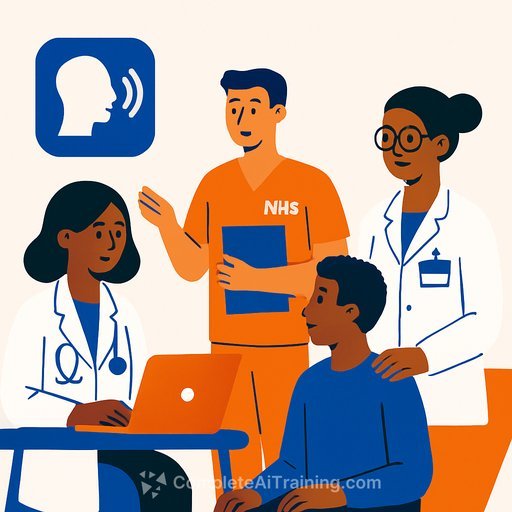How AI Is Changing Your Doctor Visit
Date: October 20, 2025
Topics: Healthcare, Generative AI
AI is already in the waiting room, the scheduler, and the chart. Tablets replace clipboards, chatbots slot patients into visits, and "ambient" tools summarize the exam room conversation into the note.
Most deployments still focus on admin work. The next phase will touch diagnosis, treatment planning, and operational efficiency in ways patients will feel directly-and will ask you to explain.
Convenience vs. Privacy
Digital intake makes life easier, but it also creates data flows beyond your clinic. Patient-entered data feeds the EHR, and de-identified data may be licensed for research, model training, or marketing.
De-identification is not the same as true anonymization. Once data is de-identified under HIPAA, it's typically no longer protected as PHI and can move in broader markets. Share that plainly with patients and document their choices. For reference, see HHS guidance on de-identification here.
What Patients Will Ask (and You Should Be Ready to Answer)
- Where is my intake data stored, and for how long?
- Which third parties can access my information?
- Can I opt out of using my de-identified data for marketing, research, or AI training?
- Is this visit being recorded or transcribed in real time?
- Where will the transcript and notes be stored, and who can see them?
- Will a human review AI-generated notes for accuracy?
- Can I view the transcript and request corrections?
- Can I decline the use of an ambient scribe during my visit?
Ambient Scribes: Less Clicking, New Tradeoffs
Ambient scribe tools listen, summarize, and code. Clinicians report less cognitive load and more complete documentation.
There's a flip side: more captured codes can mean higher downstream costs for patients. Build a process for human review, correction requests, and a clear opt-out that doesn't affect care quality.
AI That Helps Plan Treatment
Point-of-care evidence tools now pull from large sets of de-identified records to suggest what happened to similar patients. In practice, a clinician can ask a plain-language question and get a quick readout of real-world evidence to inform care discussions.
Use these tools as decision support, not decision replacement. Check data provenance, cohort definitions, confounders, and generalizability-then document how the evidence shaped the plan.
Outside the Clinic: Apps, Wearables, and Home AI
There are hundreds of thousands of health apps-and many include AI. Patients will arrive with algorithm outputs on skin lesions, heart rhythm alerts, fall detection events, and mental health screens.
Set expectations: what you can interpret, what needs validation, and what goes into the chart. Stay current on oversight for AI-enabled devices; the FDA's SaMD page is a useful touchpoint here.
Practical Guardrails for Healthcare Teams
- Post plain-language signage: what's recorded, why, storage location, retention, and opt-out steps.
- Add consent language that separates care delivery, research, and marketing; record granular preferences.
- Enable human-in-the-loop review for all AI-generated notes and codes; audit a sample weekly.
- Define a correction workflow: patient access to transcripts, turnaround times, and who approves edits.
- Vendor due diligence: storage region, encryption, retention, re-identification safeguards, and subprocessor list.
- Monitor impact: documentation time, denial rates, code shifts, patient complaints, and safety incidents.
- Train front desk and MAs on scripts to explain ambient tools and handle opt-outs gracefully.
Setting Expectations
AI will help clinicians move faster and see patterns we miss, but progress arrives in increments. Pair automation with clear consent, human review, and honest communication. That's how you keep trust while you modernize the visit.
If your team needs structured upskilling on AI literacy and clinical workflows, explore role-based programs here.
Your membership also unlocks:






